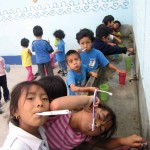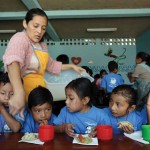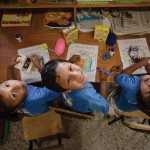Niños de Guatemala
Profit for Non-Profit: Working toward a financially sustainable future
For those who struggle financially, charitable giving is usually the first thing that gets cut from the budget, often leaving non-profits and those they help in a predicament. For non-profits, there are good years and bad years; however, the unpredictability is as debilitating as the lack of funds. Niños de Guatemala—a local education non-profit—has definitely felt the sting of the economic downturn. “When the economy is good, you get more; when the economy is bad, you get less, but it is rather unpredictable” said Sam Datlof, former communications manager at the organization.
Niños is now testing a new method of sustainable development, a term it has coined “profit for non-profit.” Profit for non-profit is what Niños, in partnership with its sister organization, Cambio Spanish School, hopes will help calm the unpredictable tide of the financial sea. And so far, it seems to be working.
Niños, founded in 2006, runs two schools near La Antigua Guatemala, one in Ciudad Vieja, which opened in 2009, and the other in San Lorenzo, opened in 2012. Both take in students from families who cannot otherwise afford a decent education for their children. The schools are certified by the Guatemalan Ministry of Education, and unlike most state-run schools, utilize a full school day. Children return after lunch for classes like drawing, dance, painting and even origami.
Parent involvement is encouraged, as parents who value education are less likely to pull their children out of classes to work in the fields picking coffee. Niños also runs community programs in subjects ranging from hygiene to English classes to computer skills. It recently started a pilot of the program Crianza con Cariño, to teach parents how to raise their children without violence.
And while Niños still has the support of its parent group in the Netherlands, its organizers felt there was more to be done locally to create financial stability. So they began “The Experience Guatemala Tour” which offers tours of Ciudad Vieja. In addition, the Padrino program was established whereby businesses and individuals agree to sponsor tuition for one child to attend a Niños school. Sponsors are encouraged to take an active role in that child’s educational life by checking up on grades and school activities, thereby becoming a positive reinforcement outside the child’s family and community circles.
But there is still more to be done.
When asked why the Cambio Spanish School came to be, Mr. Datlof said, “We [thought] it was really important to have sustainable sources of income rather than being dependent on the largesse of foreign donors.”
The Spanish school, which is run by Mr. Datlof, is another step in helping to secure Niños financial security. A for-profit company started last fall, Cambio offers Spanish-language programs on par with some of the best schools in Antigua. On the day I visited, students were having lessons on the beautiful and tranquil terraza, located outside the Niños offices. All courses are with private teachers with classes lasting in the four-hour-a-day range. At the end of the year, all of the profit from Cambio is donated to Niños.
While not completely financially inde-pendent, Niños has a goal to take over 20% of school operating costs every year. As of now it is at 80% for Ciudad Vieja. And with the combined efforts of Cambio, outside donors, and the Ciudad Vieja tour and Padrino programs, Niños is well on its way to financial independence. Nowhere is it more evident than here in Guatemala that it truly does take a village to raise a child!
For more information about donating to or volunteering at Niños de Guatemala, email megan@ninosdeguatemala.org. For more information about Cambio Spanish School, email sam@ninosdeguatemala.org


